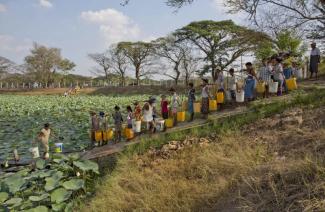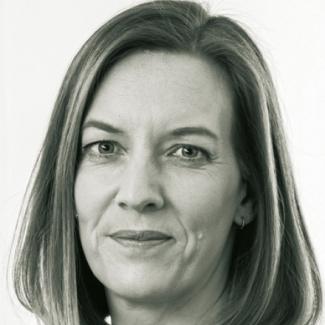Comment
Climate change deserves top-level attention
 picture-alliance/AP Photo
Myanmar’s dry season was unusually hot and long this year, leading to water shortages. People line up to fetch drinking water from a pond in Dala township south of Yangon in May.
picture-alliance/AP Photo
Myanmar’s dry season was unusually hot and long this year, leading to water shortages. People line up to fetch drinking water from a pond in Dala township south of Yangon in May.
Another sad record the space agency has for us: five of this year’s first six months saw the smallest respective monthly ice shield on the Arctic Ocean since consistent satellite records began in 1979.
World regions as far apart as Southeast Asia and southern Africa experienced the worst droughts in decades this year. According to the UN, the Mekong was at its lowest level since records began nearly 100 years ago. The waters were almost half as high as the average level before the rainy season began. It wasn’t enough to water soils, let animals drink and give people the resource they need. For 60 million people whom Southeast Asia’s largest river is the lifeline, the consequences were dire. Hunger and a lack of safe drinking water were not exceptional.
In large parts of Asia, temperatures hit record levels, and the rainy season was delayed considerably. The cycle of planting, tending and harvesting crops depends on rain. This year’s rice harvest – the main staple food of the region – was exceptionally low, so world market prices will rise. That will hurt all poor people who must buy their food, including farmers who have lost their harvests.
In southern Africa, more than 40 million people were affected by the worst droughts in decades, according to the international aid organisation Care. In April, the governments of Mozambique, Malawi and Zimbabwe declared states of emergency. In July, the Southern African Development Community (SADC) declared a regional disaster and launched an appeal for $ 2.4 billion to support the disaster response and fulfil the humanitarian needs of millions of people, who amount to about 14 % of SADC’s total population. According to an SADC statement, the drought overwhelmed “the disaster preparedness capacity in most of the affected member states”.
This year is exceptional because climate change phenomena, that have already become a common occurrence, were aggravated by El Niño. The weather event, that arises every few years and comes with warmer-than-usual water in the Pacific Ocean, causes global changes of both temperatures and rainfall.
As usual, people in developing countries suffer most: people who depend on agriculture and fishing, people who live in unstable houses, people who lack savings, job opportunities and alternatives in general. But rich world regions such as northern America and Australia are affected as well.
Now, El Niño is over. We are waiting for La Niña, the opposite phenomenon with cooler-than-usual waters in the Pacific Ocean, that often follows El Niño. Typical impacts include tropical storms and hurricanes in Asia and North America and droughts in parts of South America and equatorial East Africa.
The good news is that El Niño and La Niña won’t come back next year. The bad news however is that the climate keeps changing. Unless we act, temperatures will keep rising, and weather patterns will become ever more unreliable. Climate change is not our irrevocable fate; it’s human-made. Together we can make a difference. There actually is a global agreement to do so. It is called the Paris Agreement and deserves top-level attention and forceful implementation.
It is an important step in this direction that the USA and China, the world’s leading emitters of carbon dioxide, ratified the contract at the G20 summit at the beginning of September in Hangzhou, China. Together, they are responsible for almost 40 % of the global greenhouse-gas emissions. What needs to follow now are other countries – and above all tangible action.


